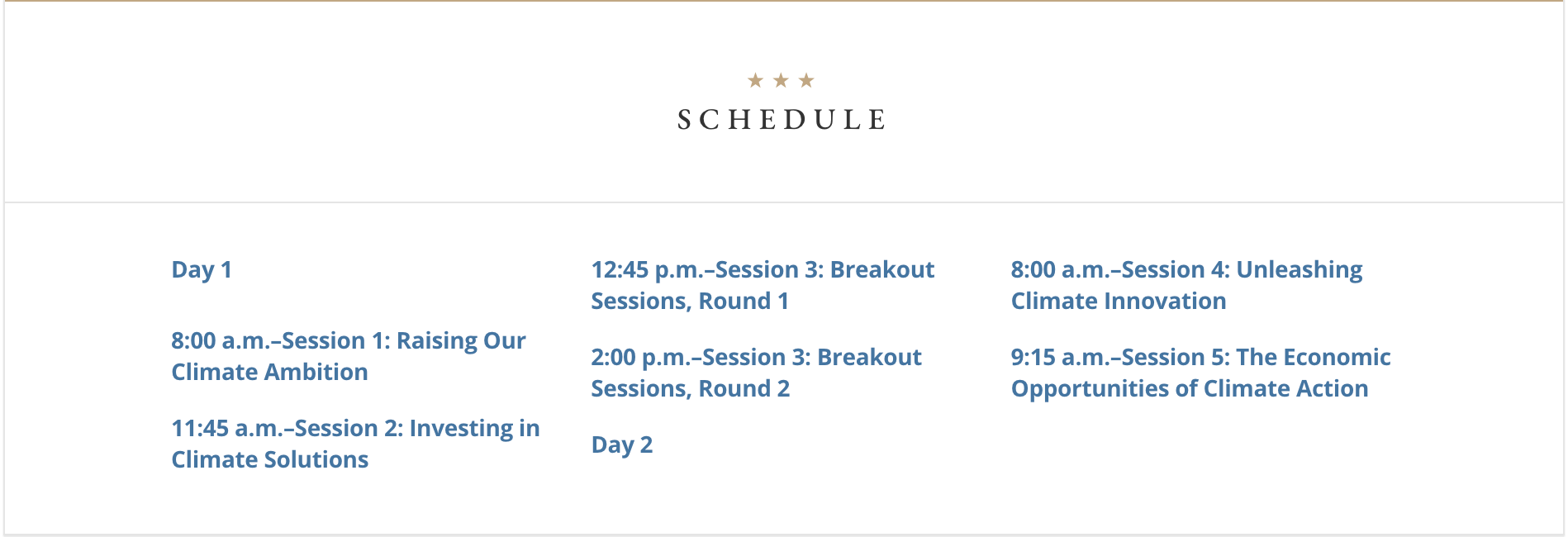All 40 invitees to attend Biden’s climate summit including major emitters China, Russia and India
Two-day Leaders’ Summit, coinciding with Earth Day on Thursday, will be held entirely online
Your support helps us to tell the story
From reproductive rights to climate change to Big Tech, The Independent is on the ground when the story is developing. Whether it's investigating the financials of Elon Musk's pro-Trump PAC or producing our latest documentary, 'The A Word', which shines a light on the American women fighting for reproductive rights, we know how important it is to parse out the facts from the messaging.
At such a critical moment in US history, we need reporters on the ground. Your donation allows us to keep sending journalists to speak to both sides of the story.
The Independent is trusted by Americans across the entire political spectrum. And unlike many other quality news outlets, we choose not to lock Americans out of our reporting and analysis with paywalls. We believe quality journalism should be available to everyone, paid for by those who can afford it.
Your support makes all the difference.Every head of state invited to President Joe Biden’s climate summit will be attending, senior administration officials said on Wednesday, setting an optimistic tone for the milestone event aimed at driving global ambition to tackle the crisis.
Some 40 world leaders will participate in the two-day Leaders’ Summit, coinciding with Earth Day on Thursday, including the US’s fellow largest polluters, China, India and Russia.
The event will kick off at 8am (EST), to try to accommodate the varying time zones for the wholly virtual event.
The US is also due to announce a more ambitious pledge to reduce its greenhouse gas emissions. The non-binding target is nevertheless symbolically important, and would give the US a renewed position of credibility from which to press other nations to increase their goals.
AP reported that President Biden will pledge an emissions cut of at least 50 per cent by the end of the decade, almost doubling the nation’s previous commitment under former President Barack Obama. However officials at a Wednesday briefing declined to give a specific number, adding to “stay tuned” for an update.
The summit will be opened by President Biden and Vice President Kamala Harris, and include statements from other world leaders. Secretary of State Antony Blinken and international climate envoy John Kerry will also be in attendance.
It will then be followed by discussions on how finance can be leveraged to tackle the crisis, and a session looking at states and cities’ climate efforts. The second day will focus on climate innovation, jobs and the transition to a more sustainable world. There will also be discussions on the climate crisis and global security.

The global talks are a key milestone ahead of the United Nations Climate Change Conference, known as COP26, this November in Glasgow.
President Biden has invited allies and adversaries alike to the event, putting aside other fraught geopolitical issues in the hopes of more dramatic climate action.
Scientists warn that global heating needs to remain well below 2 degrees Celsius (C) above pre-industrial levels, with an aim for an increasingly ambitious 1.5C goal, to avoid the worst of climate breakdown.
The current global trajectory has the planet heading for more than 3C of global heating by the end of the century.
Invitees include leaders of the Major Economies Forum on Energy and Climate, which total about 80 per cent of global emissions. Nations on the frontlines of the climate crisis, already facing more extreme weather and rising sea levels, have also been invited.
“No one has to get left behind here,” an official said on Wednesday.
The US emissions-reduction target, known as a “Nationally Determined Contribution” (NDC), will be announced by the summit. The NDC is each nation’s short-term pledge on cutting emissions and a required part of the Paris Agreement.
The promise will require a dramatic overhaul of how America runs: sweeping changes to the power sector and transportation, and rapid transition from fossil fuels to renewable energy sources like wind and solar.
Last month, the US was urged to slash emissions between 57-63 per cent from 2005 levels by 2030, in order to stay in line with the target of net-zero emissions no later than 2050, according to analysis by Climate Action Tracker.
This would be a significant jump on previous goals. Barack Obama committed to reducing emissions 26-28 per cent below 2005 levels by 2025, when 200 nations signed the Paris Agreement in 2015.

Join our commenting forum
Join thought-provoking conversations, follow other Independent readers and see their replies
Comments